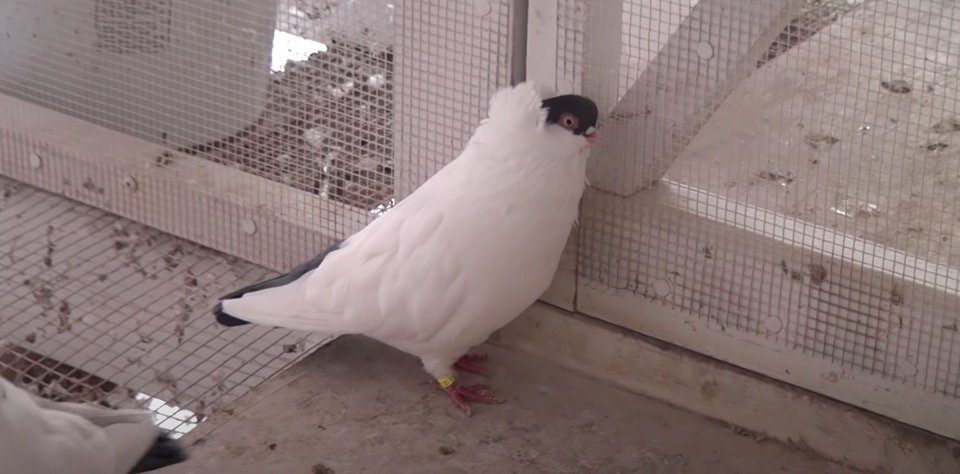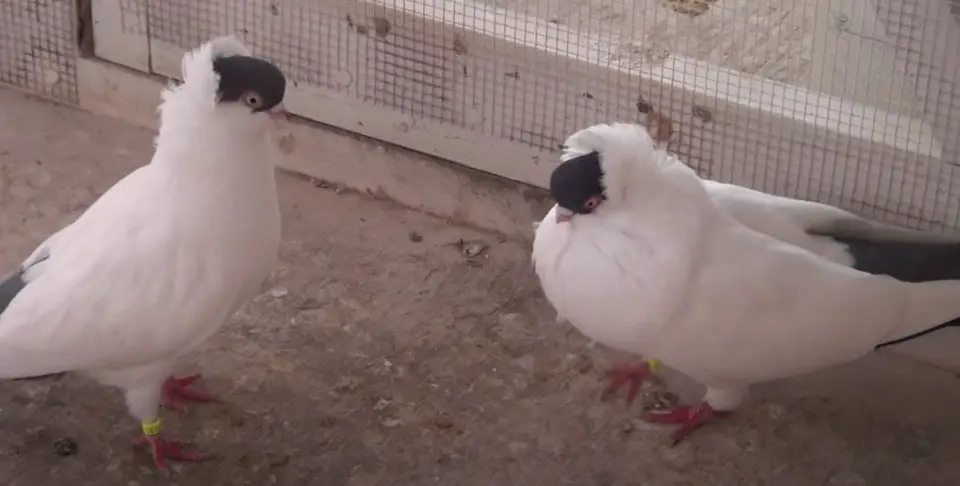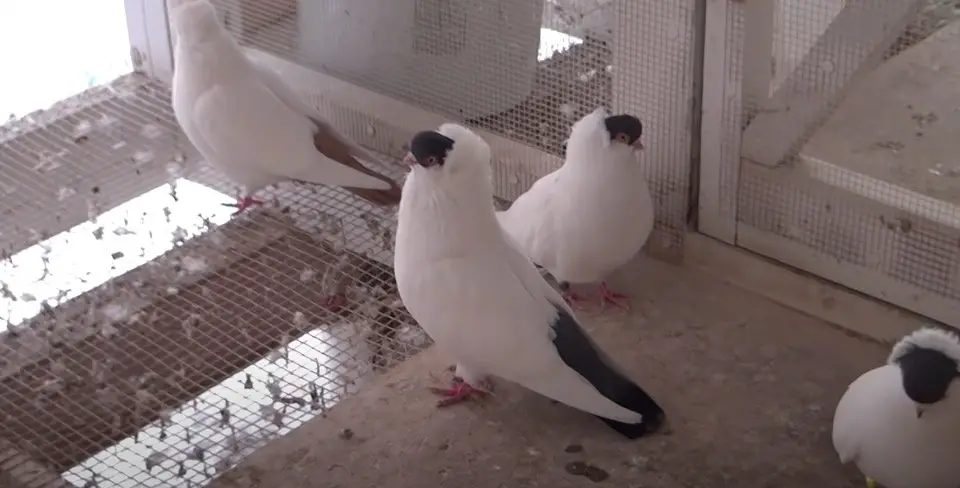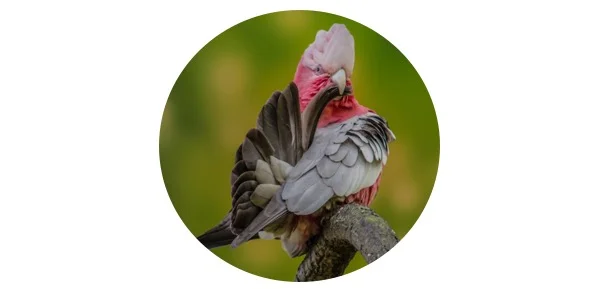Helmet Pigeon: Description, Types, Pictures, & Fun Facts

Table of Contents
Helmet Pigeon: All You Need To Know
The helmet pigeon is the variety of a fancy pigeon which is the result of selective breeding for many years. Among pigeon breeders, this variety may fall in and out but it has always been a loving and desired variety for pigeon-loving people. Many other names are given to this type of pigeon such as the helmet crested pigeon and the German helmet pigeon.

Origins Of The Helmet Pigeon
The origins of the helmet pigeon are not known exactly, but it has been referenced as far back as the 1500s. Probably it had originated from Persia, but its well-known appearance had been in 1700 in Germany.
The breed was popularised in the USA when it was imported in the early 20th century. Although in the 1950s a small group of breeders formed a national Helmet pigeon club to augment its number. The short-faced Helmet was developed by East Coast breeders and the medium-faced variety is liked by the West Coast particularly in California where breeding had been started.
Until the 1970s, the medium-faced was, a strong flier and tumbler but this breed was mainly the show bird. Today the Helmet pigeon is popular in Australia and Canada with a small following in the UK and Europe. The Helmet pigeon has shown a common ancestry with the Nun pigeon. The Helmet and the wimple both have distinctive headgear.

Helmet Pigeon Characteristics
• A Helmet pigeon has a distinctive look that makes it set apart from other breeds. As the name is given to this variety, the bird has a rounded head, and there is the absence of any flatness.
• This curved appearance gives a resemblance of wearing a helmet and it is even more peculiar in certain colorways, it is similar to the Nun and Mookee pigeons.
• Some Helmet pigeons show a smooth appearance from front to back with a prominent crest, magnifying the head shape.
• Helmet pigeons are medium in size, weighing up to 350 grams and length extending from 17 to 20 centimeters.
• They have firmly built legs with red feet with smooth texture. The legs are free of feathers but some breeders are trying to develop foot feathers also.
• Their tails are usually straight consisting of 12 main feathers that are tightly packed to each other.
• The feathers of a helmet pigeon are generally smooth in texture and this helps in creating its proportional appearance.
• The main body of the pigeon is covered with white feathers, and the tail is covered with brown or other colored feathers.
• Their head feathers are of the same color as their tail feathers.
• These always have a white body, and the possible colors for the helmet and tail include black, blue, red, silver, and yellow. they may have a mixture of colours in a few cases also.
• During the pigeon show, the main attraction is the detailing of the head, the shell shape of the crest which forms the helmet, eye color which should look like pearl, and the color of the beak-like a bleached bone.

Helmet Pigeon Behaviour
• Helmet pigeons are hardy and show a lovely personality.
• They are perky, intelligent birds.
• They are sociable, so they are handled easily.
• Helmet pigeons are considered a great breed for keeping as pets.
Breeding Helmet Pigeons
Short-faced modern helmet pigeons are often not very attentive parents, so their young ones are hand-reared by owners. In medium-faced Helmet pigeons, this trait is uncommon. It would be better to breed them two or three times a year. Overbreeding is not advisable. Diet should be planned accordingly to enhance egg production and the production of crop milk.
Helmet Pigeon Breed Variations
The Polish Helmet pigeon is an exotic breed of Helmet pigeon. The Polish helmet pigeon originated in Poland and is also known named as Polish Krymka Tumbler and Krymka Polska.
It shows different characteristics to the regular Helmet by showing the presence of large feathers on its feet. It also has colored feathers on only the top half of its head, as well as it’s tail.
It is a medium-sized bird and white in appearance. It is also saved for its head and tail feathers. It also exhibits a small crest on its head.
Like the helmet pigeon, the Polish variation is also used as a show or ornamental bird. It is also favoured by people as a nice pet. The main characteristics are that this breed is easy to train and tame and it is a sociable variety also.









